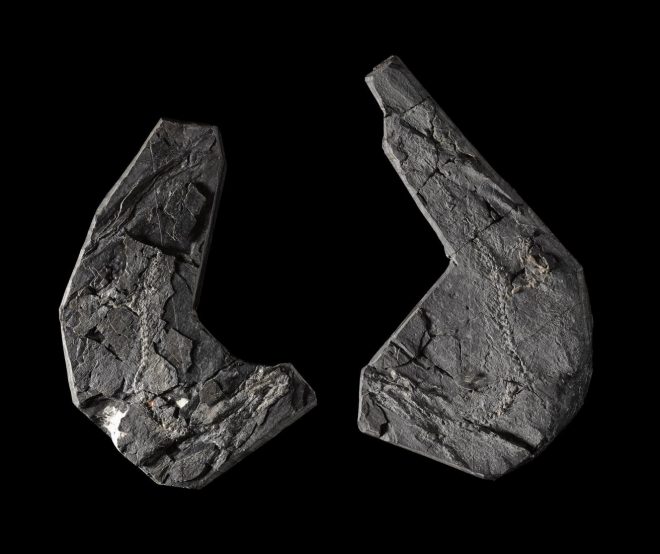A set of scientific papers has just been published by the Royal Society of Edinburgh to celebrate the life of Scottish fossil collector Stan Wood (1939-2012) and his remarkable discoveries. The volume is a result of the NERC-funded TW:eed project. This project was set up to study rare terrestrial fossils from the earliest Carboniferous of the Scottish Borders that the museum acquired from Stan and were also collected by project members.
The volume comprises 10 papers, the first of which, by Nick Fraser and colleagues, is a summary of Stan’s discoveries. Prior to this volume, Stan had discovered 29 new species of fish, tetrapods, arthropods and a plant, four of which had been named after him. His most well-known discovery was Westlothiana lizziae, commonly known as Lizzie which, at the time of its discovery, was considered to be the oldest known lizard in the world.

Stan’s last major discovery was the Willie’s Hole site near Chirnside, Berwickshire, which led to a major excavation in 2015 organised by National Museums Scotland as part of the TW:eed project. Sir David Attenborough commented on Stan’s finds that “…The fact that they shed light on a part of geological history that hitherto has been almost blank makes Stan Wood’s discoveries of world-wide importance.”

Tim Smithson of Cambridge University and Ian Rolfe, former Keeper of Geology at National Museums Scotland, discuss Stan and his remarkable ability to find fossils, which they attributed to persistence, tenacity, optimism, curiosity, observation, photographic memory, hard physical work, etc…! Thankfully he also had a scientific approach to his collecting and made detailed records of his finds.
Elsewhere in the volume Mike Coates and Kristen Tietjen from Chicago University provide a detailed study of 3D fossil shark skulls belonging to Tristychius, most of which were collected by Stan. Jenny Clack from Cambridge University and colleagues give an in-depth description of a large tetrapod jaw found by Stan, along with comparisons of similar previously known specimens. And Stan’s widow, Maggie Wood, provides a detailed account of a major excavation that Stan undertook in the 1990s at Mumbie Quarry near Glencartholm. He collected over 200 fossil fish from there over two years, belonging to 23 species, as well as a variety of arthropods.
Donglei Chen of Uppsala University and colleagues describe a new genus and species based on a partial tetrapod jaw, which they name after Tantallon Castle and Stan: Tantallognathus woodi. Kelly Richards of Cambridge University and colleagues provide an account of a shark fauna, known predominantly from crushing teeth, collected from Whitrope Burn in the Scottish Borders, a site that Stan discovered. And Tim Smithson and Jenny Clack describe a new species of tetrapod named after Stan, Mesanerpeton woodi, based on several associated bones that he collected. The most interesting bone is the humerus which adds to our understanding of how walking evolved in early tetrapods.

Along with colleagues, I also describe seven fossil millipede specimens, five of which were found by Stan. One of them is named after him, Woodesmus sheari, and consistutes the new family Woodesmidae. A second specimen of Woodesmus was found on a field-trip to Burnmouth as part of the 7th International Conference on Fossil Insects, Arthropods and Amber, which was held at the National Museum of Scotland in 2016. Although the other specimens are too incomplete to be named, it is clear there are six different forms present. This greatly increases the known diversity of millipedes at that time as only one other specimen was known.

Finally, John Long of Flinders University discusses remarkable new discoveries of fossil fishes from Gogo, Western Australia. The fossils are of late Devonian age, so slightly older than the early Carboniferous Scottish material described above. They are preserved 3D in limestone nodules, even with soft tissue preserved, so the fossilisation process took place very quickly and halted decay, providing a wealth of information not obtainable from other fossils.
The most remarkable thing to have come from the TW:eed project is that we have closed ‘Romer’s Gap‘. It was formerly believed that very little lived on the land around 350 million years ago because very few fossils had been found, and it had been suggested that low oxygen levels were the cause. However, thanks to Stan’s persistent endeavours we now know there was a diverse terrestrial fauna of tetrapods and arthropods living on the land at that time.
